Tutorials
GeoWall Construction and Multi-graphics Card Rendering Techniques:
An Overview of Parallel Visualization Construction and Issues for Virtual Environments
Martin Turner, Anja Le Blanc and Louise Lever
Abstract:
Visualizations using Computer Graphics techniques have the immense power to convince and illustrate and at times enable users to gain a higher level of insight and inspiration. The brain power required to run the human visual system consists of about 1/3 of its size and as such using computer visualizations have been repeatedly shown to be one of the best and sometimes the only way of conveying a huge amount of data over a short period of time. A large part of the human visual system is actually repeated so that visual representation can involve both eyes enabling stereoscopic 3D vision.
In the last twenty years there has been a rapid growth in building facilities aimed at immersing users in visual presentations. These have involved multiple projection systems, synchronized so as to harness the power of many computing processors and graphics pipes. In matching the human visual system many facilities have involved various stereoscopic display techniques. New powerful consumer graphics cards and cheap data projectors combined with suitable synchronized rendering techniques, now enable the creation of cheap portable systems to be constructed (Geowalls included).
This course presents a diverse mixture of topics related to describing systems for stereoscopic presentation. Starting with the human visual system, the need for stereoscopic imagery is presented before describing various visualization systems and leading up to the software and hardware considerations for constructing simple portable visualization units.
Session 1: The Human Visual System:
- Why we can not see – ten good reasons the human visual system is both excellent and also very very bad.
- Lies, Damn Lies and Scientific Visualization
- Stereoscopic process and principles – the Human Visual system “belief” engine.
Session 2: Creating ‘Cheaper’ visual effects
- Guide to Good Stereo Cue Creation.
- Hardware construction and choices – a virtual tour through ten years of digital stereoscopic construction.
- The GeoWall revolution – or possibly evolution?
- then add on the Access Grid – “Video Conferencing on Stereoids”.
Session 3: Programming for Virtual Environments
- An overview of the AVS/Express MPE (MultiPipe Express) and PST (Parallel Support Toolkit) product development
- Introduction to rendering parallelization for visualization – data, computation, rendering, composition and display
- Exploiting multiple graphics cards and compute nodes
- Intelligent caching strategy and removal of performance bottlenecks
- Portable demonstrations
Web References:
- MPE and PST development Researcher project web pages http://www.sve.man.ac.uk/mvc/Research/mpe/ http://www.sve.man.ac.uk/mvc/Research/PST/
- Geowall Consortium http://www.geowall.org
- SAGE VRE project http://www.sve.man.ac.uk/mvc/Research/sage/
- Manchester Computing http://www.mc.manchester.ac.uk/
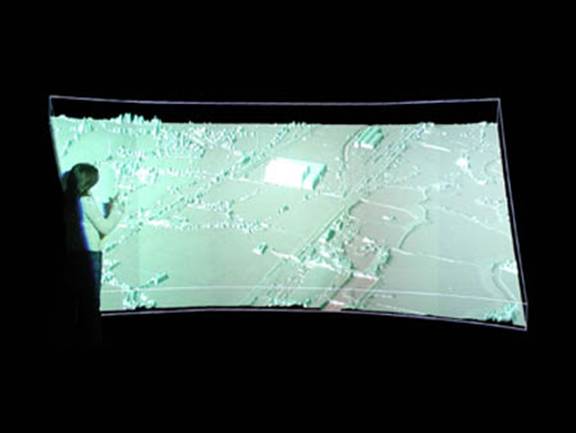
Full wall 3D visualization of a LiDAR dataset reconstructing an area in Staffordshire
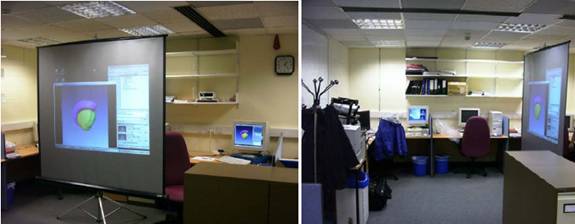
A pseudo-coloured fruit-fly brain visualized in 3D to highlight its main parts (Amira/TGDS), with the interface control displayed on the right (Access Grid AG2 environment).
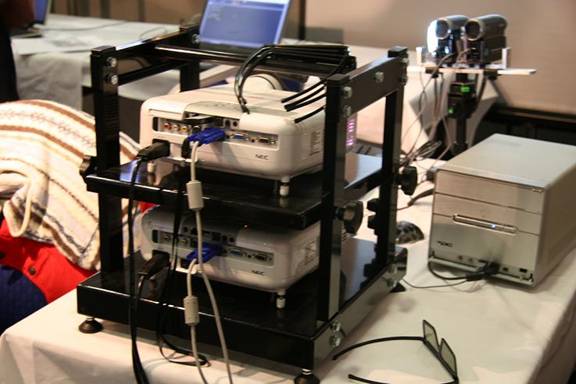
Portable GeoWall projection and recording system.
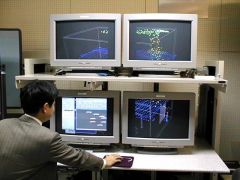 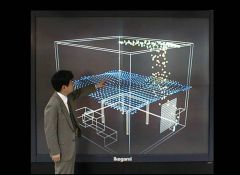
AVS/Express in four-screen MultiPipe Express Mode (KGT Inc)
|





